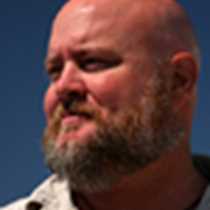San Marcos Island & Santa Rosalía
Our second morning at sea started with a gorgeous sunrise a few miles south of San Marcos Island, located in the northern portion of the state of Baja California Sur. We landed on the north-eastern side and quickly divided into different groups to explore a very lush arroyo and the shoreline. Beach-combers had a great time looking for shells, bones, feathers, carapaces and other stuff that the sea dumped on the coast, including such treasures as a whale rib, multiple sea urchin skeletons and the remains of a huge porcupine fish. Hikers admired the many adaptations that plants have in order to survive in a desert environment; large cardón cacti, iron wood trees and passion flowers were just a few of the plant species that we found, whereas ospreys, Costa’s hummingbirds and a peregrine falcon were observed.
During lunchtime the National Geographic Sea Bird sailed north-west towards our afternoon destination, the quiet town of Santa Rosalía. Founded in 1885 by a French mining company named El Boleo, Santa Rosalía was a busy place during the late 1800s and the early 1900s due to the huge copper deposits around the area. This mine contributed most of the mineral that made Mexico the second-biggest producer of copper in the world; the latest technology of the time and the extensive use of electricity for melting, drilling, pulling and ventilation made El Boleo a very efficient enterprise.
The town quickly grew in importance and in 1895 the company managers brought from France a pre-fabricated metal church designed by Gustave Eiffel, which is still an active temple today and one of the biggest motifs of pride among the locals. The mining times are long gone and Santa Rosalía is now a much quieter place where fishing is now the main economic activity. Remnants of the old days could still been seen everywhere, like the beautiful Hotel Francés where we enjoyed our cocktail hour and watched the day slowly come to an end.




